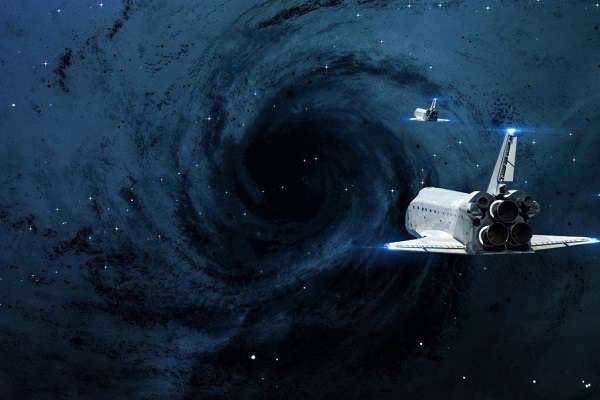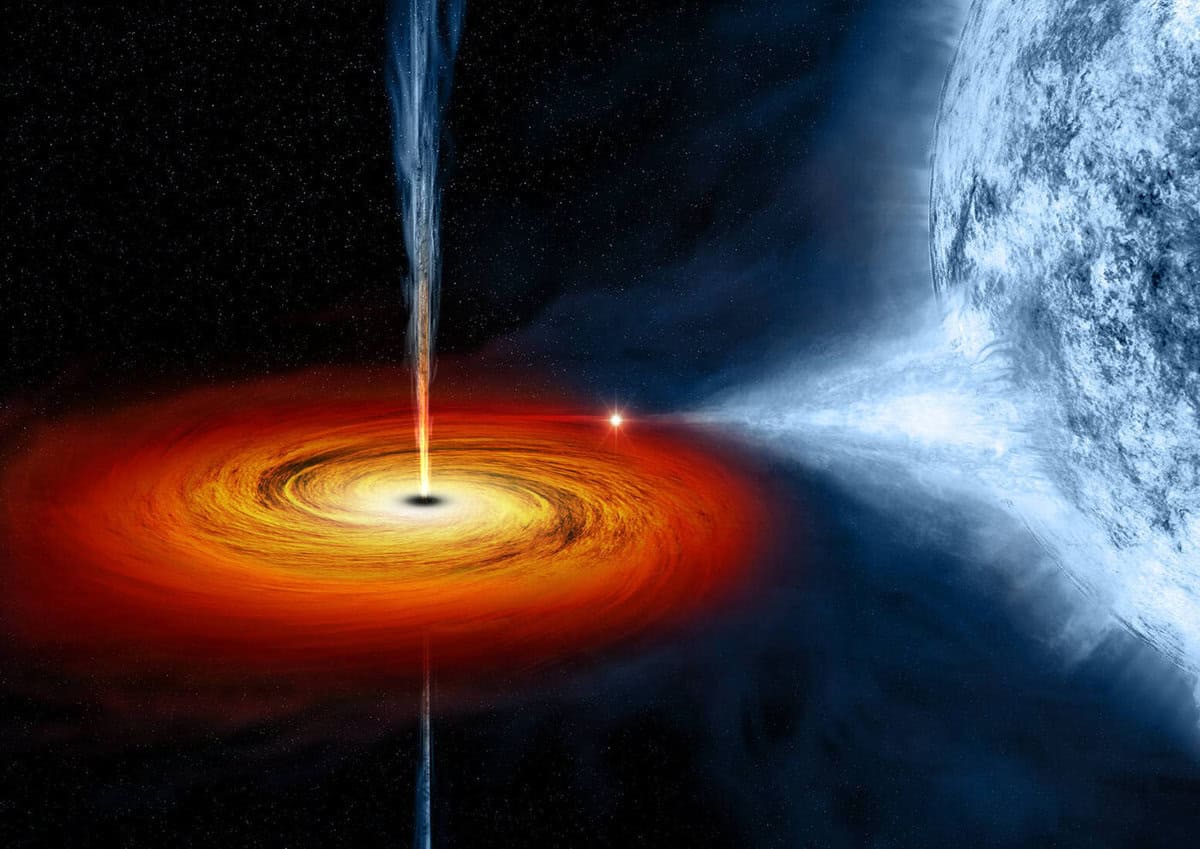Researchers at the Israel Institute of Technology have successfully generated a sonic equivalent of a black hole in a controlled laboratory setting, providing concrete evidence of the existence of stable Hawking radiation. Previously, a team of physicists from Mexico and Israel had demonstrated the presence of Hawking radiation using ultra-short laser pulses and photonic crystal fiber. However, the stability of this radiation had yet to be confirmed. In this article, we explore the nature of Hawking radiation, the methodology behind creating a black hole analog, and the potential implications of this groundbreaking discovery.
Explore the Concept of “Hitech” in
What is the Mechanism Behind Black Holes?
Black holes are regions in outer space where the gravitational force is incredibly powerful. This force is so intense that anything that enters a black hole cannot escape, not even light. Theoretical predictions suggest the existence of a boundary around black holes called the event horizon. Once an object passes this boundary, it becomes trapped within the black hole, as the gravitational pull becomes increasingly stronger towards its center.
In the case of a typical black hole, Hawking radiation arises when a pair of virtual particles materialize at the event horizon and transform into a pair of “particle-antiparticle.” During this process, one particle falls into the black hole while the other particle shoots away into space.
What was Stephen Hawking’s prediction?
Theoretical physicist Stephen Hawking made a prediction that even though nothing can escape from black holes, they do emit a small amount of light known as Hawking radiation. According to Hawking’s predictions, this radiation is spontaneous, meaning it comes from nothing, and stationary, meaning its intensity does not change significantly over time.
Hawking radiation is a key concept in the scientific community when it comes to the decay or evaporation of small black holes, which could potentially be created during experiments at the Large Hadron Collider (LHC). This phenomenon forms the basis for the concept of a singular reactor, a device that harnesses energy from a black hole through Hawking radiation.
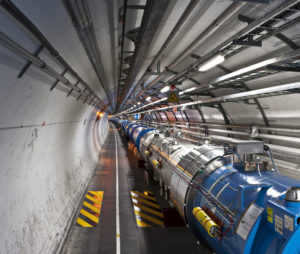
In a discussion with Ya. Zeldovich, V. Gribov argued that particles must be emitted by black holes as a result of quantum tunneling. Even before publishing his work, Hawking traveled to Moscow in 1973, where he had a meeting with Soviet scientists Yakov Zeldovich and Alexei Starobinsky. They showed Hawking that, according to the uncertainty principle of quantum mechanics, rotating black holes should generate and release particles.
Based on Hawking’s predictions, black hole radiation is spontaneous. In their recent research, the scientists aimed to determine whether the radiation emitted by their black hole is also constant over time (i.e., remains stationary).
What were the findings of the scientists?
A recent study conducted by researchers at the Technion Institute of Technology in Israel aimed to test the theoretical predictions of Stephen Hawking. The focus of their study was to determine whether the equivalent radiation in a lab-created “artificial black hole” behaved in a stationary manner.
Upon entering the event horizon, even light cannot escape from the black hole. Hawking radiation, on the other hand, originates just outside the event horizon, where light can barely manage to escape. The peculiar aspect of this radiation is that it emerges from seemingly empty space and makes its way to Earth.
Rubidium rushes rapidly, at a velocity surpassing that of sound, thereby rendering it impossible for sound to counteract its flow. Imagine an individual attempting to swim against this current. If the current is moving at a speed greater than the individual’s swimming capabilities, progressing forward becomes an insurmountable task. The swimmer is persistently pushed backwards, as the current propels in the opposing direction and at an excessive rate. Eventually, the person becomes immobile, trapped in a fixed position. This parallels the experience of being ensnared within a black hole and endeavoring to reach the event horizon from within.
Hawking radiation is composed of pairs of photons, which are particles of light: one photon escapes from the black hole while the other photon is pulled back into it. To detect the emitted Hawking radiation from the analog black hole, scientists searched for analogous pairs of sound waves, with one wave leaving the black hole and the other wave entering it. Once these pairs of sound waves were identified, the researchers sought to establish if there were any correlations between them. The physicists conducted their experiment a staggering 97,000 times, which equates to 124 days of uninterrupted measurements. Ultimately, the researchers successfully observed that the black hole analog produces a pair of sound waves and further confirmed the existence of a correlation between them.
On the whole, the findings appear to validate the hypothesis that the radiation discharged by black holes remains constant, in line with Hawking’s predictions. Though these findings are mainly applicable to the simulated black hole they generated, theoretical investigations can help ascertain their applicability to actual black holes as well.
What’s the main takeaway?
The researchers’ study raises significant inquiries. The fact of the matter is that they were able to witness the complete lifespan of the simulated black hole and observe the commencement of Hawking radiation. Future studies may seek to compare the findings of this research with predictions regarding the behavior of a genuine black hole. Consequently, scientists will be able to determine if Hawking’s “actual” radiation initiates from zero and subsequently intensifies, as physicists observed during the experiment.
A genuine black hole features a pair of boundaries: an external boundary known as the event horizon (or more accurately, the visibility horizon) and an internal boundary known as the Cauchy horizon. Positioned between these two boundaries is a region known as the T-region, where all objects are only capable of moving in one direction: inward. Whether it be light, a particle, or even a person, movement in the T-region is strictly limited to an inward trajectory. As one progresses deeper into this region towards the inner Cauchy horizon, tidal forces grow increasingly stronger. Strangely enough, beneath the Cauchy horizon, an object’s movement towards the center experiences a sharp decrease in speed (relatively speaking, in the coordinates that accompany the object itself).
Inside the inner horizon of a black hole, the gravitational pull is significantly weaker, allowing objects to move freely without being drawn towards the center. However, they remain trapped within the black hole because they cannot pass through the inner horizon in the opposite direction, towards the event horizon.
Conceptually, the event horizon represents the outer boundary of the black hole, while the inner horizon is a smaller sphere within it. If someone were to fall beyond the inner horizon, they would still be confined within the black hole. However, they would experience a relatively “normal” environment with lower gravity, alleviating some of the extreme physical effects associated with being inside a black hole.
According to some physicists, the intensity of radiation emitted by an analog black hole increases when it forms an inner horizon. Interestingly, the researchers at Technion have observed this exact phenomenon in their analog black hole experiment. This finding could potentially encourage other physicists to investigate how the formation of an inner horizon affects the strength of Hawking radiation.
Furthermore, it is worth noting that
Astrophysicists have recently demonstrated that charged black holes have the potential to harbor exotic fractal objects and various other peculiar entities. This discovery challenges our current understanding of black holes and opens up new avenues for exploration.
Discover “Hitech” on
What exactly are black holes?
Black holes are massive celestial objects. They possess such an immense gravitational pull that they have the ability to absorb light rather than reflecting it. This is why they are incredibly difficult to observe. The gravitational force exerted by black holes is so strong that even light rays cannot escape their grasp, causing a distortion in the surrounding cosmic imagery, as depicted in the image above. Black holes are not the solid black spheres that we typically envision them as. Instead, they are transparent, but they cast a shadow that appears black. In essence, they act as spherical absorbers for anything that enters their gravitational field.
What is the origin of black holes?
What is the size of black holes?
The size of a black hole can be compared to a sphere, with the diameter being directly proportional to its mass. Therefore, as more mass is absorbed by the black hole, it grows larger in size.
When compared to other celestial bodies, black holes are incredibly small due to the immense gravitational pressure that compresses their mass into tiny volumes. For instance, a black hole with the mass of planet Earth would only have a radius of a few millimeters. This is approximately 10 quadrillion times smaller than the actual radius of our planet.
The radius of a black hole is referred to as the Schwarzschild radius in honor of Karl Schwarzschild, who first calculated black holes as a solution to Einstein’s general theory of relativity.
What is the location of black holes?
Black holes are typically found at the core of galaxies. Their immense gravitational force allows them to hold star systems at great distances, resulting in the formation of the galaxies we observe today.
Within our own Milky Way, there exists a supermassive black hole known as Sagittarius A*. This black hole is approximately 4.02 million times more massive than the Sun and has a radius of around 45 astronomical units (where one astronomical unit is the average distance between the Earth and the Sun).
In addition to supermassive black holes found at the centers of galaxies, there are also “local” black holes that form after the collapse of massive stars.
No one knows with certainty. According to the general theory of relativity, a black hole contains a singularity, a location where tidal forces become infinitely strong, and once an object crosses the event horizon, it can only move towards the singularity. Consequently, the general theory of relativity is not applicable in these regions – it fails to provide accurate predictions. To comprehend the inner workings of a black hole, a theory of quantum gravity is required. It is widely acknowledged that this theory will supplant the singularity with an alternative phenomenon.
How can universes exist within the confines of a black hole?
There are various theoretical black hole scenarios – whether they possess an electric charge or not, whether they are rotating or stationary, whether they are engulfed in matter or adrift in empty space. Some of these hypothetical black holes likely exist within our own universe. For instance, a frequently encountered type is a rotating black hole encircled by falling matter.
However, certain types of black holes remain purely theoretical. Their behavior and characteristics can be described solely through mathematical methods. One such example is an electrically charged black hole encompassed by antidesitter space. This particular space exhibits a constant negative geometric curvature and bears resemblance to a saddle in shape.
The researchers of the recent study have uncovered that when these types of black holes cool down, they generate a “haze” of quantum fields encircling their surface. This haze is sustained by the black hole’s gravitational force on the object’s surface, but propelled outward by the electric field. Consequently, a superconducting substance materializes within this haze. These black holes possess an interior event horizon in addition to the typical event horizon. As a result, charged black holes can be traversed without disintegrating into atoms.
Scientists have demonstrated that enigmatic phenomena may await beyond the boundaries of a charged black hole. Researchers have revealed that the innermost regions of a superconducting black hole could potentially embody an expanding universe – a realm where space can stretch and contort in varying directions and rates.
Furthermore, based on the black hole’s temperature, certain areas of space might undergo subsequent cycles of vibrations, resulting in the formation of additional expanding regions. This process would continue indefinitely, generating a fractal-like mini-universe that repeats infinitely, but with diminishing size.
Also, take a look at
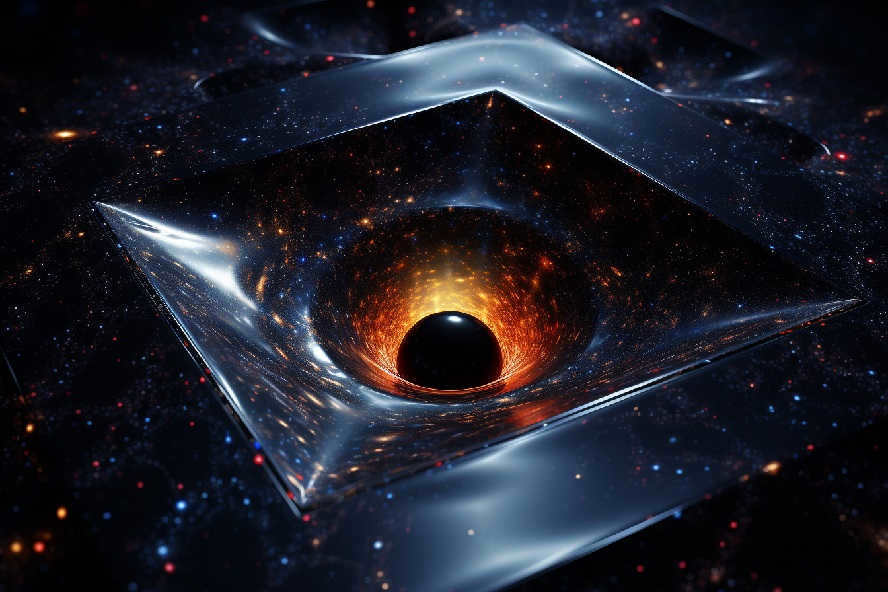
Researchers have made progress in their understanding of black holes.
The study of black holes has been ongoing for over a century, beginning in 1916 with physicist Karl Schwarzschild’s research based on Einstein’s theory of gravity. However, mathematician Marcus Kouri from Stony Brook University pointed out that, “We still lack the necessary tools to determine whether a region of space containing matter will collapse into a black hole.”
Advancing our comprehension of black holes
Kouri and his team, including Sven Hirsch, Dimitre Kazaras, and Yiyiu Zhang, have made significant progress in our understanding of black holes. Their research has brought us closer to detecting the existence of black holes based solely on the density of matter. Furthermore, their mathematical analysis provides evidence for the existence of larger black holes in dimensions beyond what was previously believed – potentially having four, five, six, or even seven spatial dimensions.
From speculation to gravitational singularity
In the year 1972, physicist Kip Thorne put forth the concept known as the “hoop hypothesis,” which served as a significant advancement in comprehending the process by which an irregularly shaped object could collapse into a black hole. However, this hypothesis has yet to be precisely delineated. Subsequently, in 1983, mathematicians Richard Schoen and Shing-Tung Yau established a crucial iteration of the hoop hypothesis by demonstrating the precise amount of matter that must be compressed into a given volume in order to form a closed entrapment surface.
There is a new approach that has been proposed, which involves utilizing Jang’s equation and a cube that is capable of undergoing significant deformation instead of a hoop. This concept is similar to Thorne’s suggestion of using square hoops rather than the conventional round ones, according to Kouri. If scientists are able to locate a cube in a region where the density of matter is considerably greater than the cube’s dimensions, a closed trap surface can be created. This measurement is much simpler to confirm as it only requires determining the distance between the two closest opposite faces of the cube.
Additional investigation and unanswered inquiries
The research team encountered difficulties when attempting to explore dimensions beyond seven, as they encountered singularities in their findings. The next logical course of action would be to substantiate the presence of black holes through the concept of “quasi-local mass”. There are several other unresolved inquiries, such as whether an object must be compressed in all three spatial dimensions to generate a black hole, or if compression in just two or even one dimension would suffice. These and numerous other uncertainties pertaining to black holes persist, and scientists continue to delve into research that originated over a century ago.
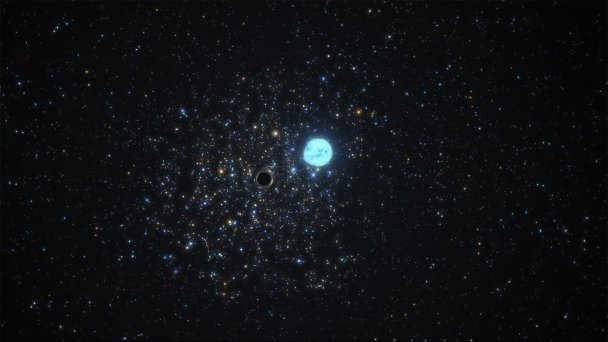

The enigmatic nature of black holes makes them one of the most intriguing entities in the cosmos. However, their elusiveness poses a significant challenge when it comes to studying them. Nonetheless, scientists have managed to devise several methods for detecting the presence of these celestial behemoths, and they have recently made yet another significant breakthrough in this regard.
According to Albert Einstein’s general theory of relativity (GTR), black holes were predicted to exist. In this theory, gravity is seen as the curvature of space-time. In 1915, Karl Schwarzschild made an interesting discovery based on the equations of GTR. He proposed that there could be an object with an unimaginable density: if it had the mass of the Earth, its radius would be around one centimeter, and if it had the mass of the Sun, its radius would be several kilometers. As a result of this superdense object’s gravity, space-time would become curved around it. In this curved geometry, straight lines that light rays travel on would transform into closed loops. Light would follow these loops, never reaching an observer far away. This is why nothing, not even light, can escape from a black hole.
Nevertheless, during the years 1930-1960, researchers demonstrated that black holes may materialize through the detonation of the most colossal stars (having a mass exceeding 30 suns). By the conclusion of their existence, these stars supernova. In this process, the star’s external layers are expelled into the cosmos while the core undergoes a rapid contraction, ultimately transforming into a black hole.
Blazing Inferno in the Depths
While theorists were scouring the depths of their calculations in search of black holes, observers made a surprising discovery in space. To their astonishment, the seemingly all-consuming voids turned out to be colossal cosmic beacons.
The truth is that the black hole possesses a distinctive boundary. This boundary, from which nothing and no one can escape, has a specific radius. Measured in kilometers, it is three times the mass of the black hole, measured in solar masses. Anything beyond this boundary may eventually succumb to the black hole’s gravitational pull, but it also has the potential to escape. Even light and other forms of radiation can break free effortlessly.
In the center of galaxies, there exist supermassive black holes with masses ranging from millions to tens of billions of suns. A portion of these black holes are surrounded by a dense cloud of matter that they readily absorb. Streams of matter encircle the black hole, yet have not yet crossed the point of no return, where they collide with each other and generate extreme temperatures due to friction. This heated gas emits a bright glow in X-rays and occasionally in other wavelengths. Consequently, the luminosity of certain black holes can reach hundreds of trillions of suns, making them the most potent sources of radiation in the entire Universe.
The discovery of supermassive black holes in the centers of galaxies dates back to the 1960s. However, initially, cautious scientists were not quick to identify these celestial bodies as black holes. It wasn’t until this century that conclusive evidence was obtained. In 2008, Reinhard Genzel and Andrea Ghez provided irrefutable proof that the object at the heart of our own Milky Way is indeed a black hole (earning them the 2020 Nobel Prize in Physics, alongside theorist Roger Penrose). Furthermore, in 2019, the Event Horizon Telescope collaboration conducted a groundbreaking exploration of the central black hole in the M87 galaxy. This endeavor resulted in astronomers capturing the first-ever detailed image of a black hole itself, rather than just the matter surrounding it, using radio waves.
Dancing among the celestial bodies
And what about the enigmatic phenomena called black holes, which are formed from the collapsed cores of massive stars? These cosmic monsters also emit X-rays when they consume matter. However, these cosmic crumbs rarely have the opportunity to indulge in a lavish banquet. A black hole with the mass of a star can only satisfy its insatiable hunger by gradually devouring a companion star. If this companion star happens to be too close, the immense gravitational pull of the black hole stretches it to such an extent that it loses its spherical shape and resembles a deformed potato, while its matter is ripped apart piece by piece.
Star pairs themselves are quite common in the cosmos. However, it is extremely rare for a black hole to find itself in such close proximity to a potential meal. This is why astronomers, who specialize in observing X-ray emissions, have only discovered a few dozen stellar-mass black holes, despite the fact that the first one was detected as far back as the 1970s. In theory, there should be hundreds of millions of black holes in our own Milky Way galaxy alone, formed from the cataclysmic explosions of dying stars.
There exists an alternative method for discovering black holes with stellar mass, utilizing their companions. It is not necessary for the black hole to consume its companion. Instead, one must simply monitor the movement of the star closely. By doing so, it becomes feasible to determine that the star is orbiting around an unseen object and to calculate the mass of said object. If the mass exceeds that of three suns, it can only be a black hole; a neutron star would possess an excessive amount of mass, and a regular star would emit light.
This method has the potential to detect numerous cosmic entities that are invisible to the naked eye. However, it requires extremely meticulous observation, and thus far, has only yielded a handful of discoveries pertaining to black holes. Interestingly enough, scientists recently utilized this technique for the first time to study an object located beyond our own Galaxy. They successfully identified a black hole with a mass equivalent to that of 9-13 suns in the Large Magellanic Cloud, which is a satellite galaxy of the Milky Way. It is worth noting that this achievement was the result of over two years of observations conducted using the VLT, the world’s largest optical telescope. Prior to this breakthrough, the only way to detect stellar-mass black holes located outside of the Milky Way was through the detection of X-rays or gravitational waves.
The Trembling of Space and Time
When it comes to the latter topic, a gravitational wave refers to a distortion in the fabric of space and time. This phenomenon actually alters the distance between various points in space. However, it is important to note that riding these waves will not result in any significant shortening of distances, as these fluctuations are incredibly minuscule. Theoretically, a gravitational wave occurs whenever a physical object experiences acceleration, even if it is as light as a feather falling to the ground. In practical terms, only the most sensitive modern detectors are capable of detecting the “echo” of these gravitational waves, which typically originate from cosmic events such as black hole or neutron star collisions. It is no surprise that these detectors are considered marvels of engineering, considering that even distances as small as the radius of a proton can be affected by the immense power of these “gravitational tsunamis”.
Therefore, up until now, there have been around 90 instances of black holes colliding either with each other or, less commonly, with neutron stars. In terms of each specific galaxy, this occurrence is incredibly uncommon. However, the detectors are capable of observing regions hundreds of millions of light-years away, where numerous galaxies are within their range of vision.
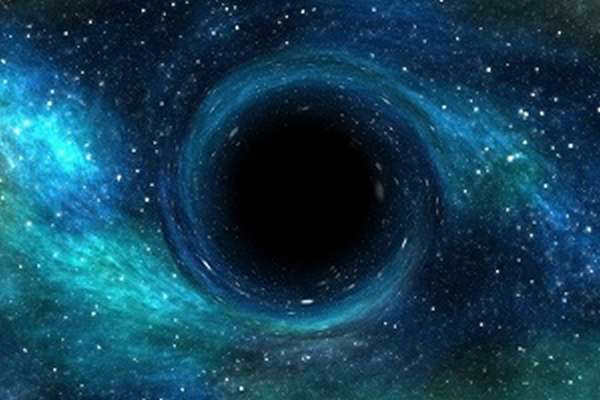

Black holes in the Universe have always been a fascinating enigma for both contemporary space explorers and ancient civilizations’ scientists.
The center of this physical anomaly holds many unanswered questions. What laws of physics govern it? How does time behave in its vicinity? Why do even particles of light become trapped in its gravitational pull?
There is hope that we can unravel the mysteries surrounding black holes. By relying on theoretical physics and the works of esteemed scientists, we can peer beyond the event horizon and shed light on these cosmic phenomena.
What is the nature of a black hole in the cosmos and what does it appear like?
A black hole is characterized by its reduction to a singular point in space, where the gravitational pull is incredibly intense, to the extent that it can devour light.
But why does this occur? It happens due to the minuscule size of the physical space it occupies. This extraordinary phenomenon can be attributed to the demise of a massive star.
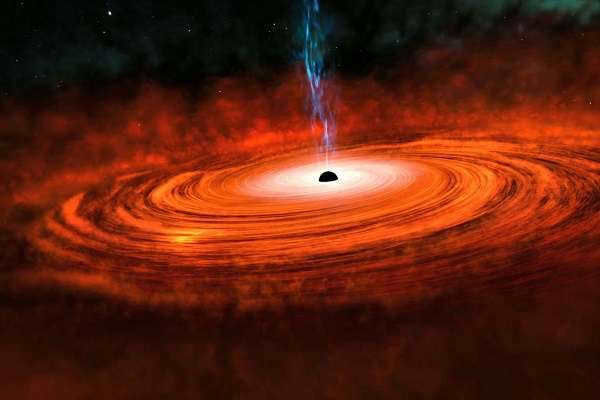
It should be noted: A black hole cannot be regarded as a physical object – it is a phenomenon where the flow of time and the three commonly accepted dimensions are distorted.
The conventional geometric equations do not apply in this case.
There are three known types of black holes. Let’s categorize them:
- Ultra-small black holes, which are comparable in size to an atom but have the mass of a small mountain.
- “Stellar” black holes of medium size with a mass twenty times that of the Sun. One of these can be found in the Milky Way galaxy.
Formation and Composition of Primordial Black Stars
The emergence of primordial black stars is attributed by scientists to the theory of the initial explosion and the early stages of the universe’s formation.
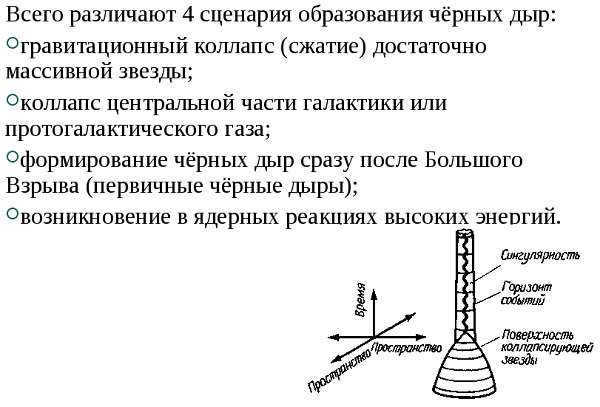
Stellar black holes are created when the core of a massive star cools and collapses under its own gravitational force, resulting in a supernova explosion that tears apart part of the star’s space.
There is a theory suggesting that supermassive black holes were formed simultaneously with the galaxies in which they reside.
In order to thoroughly study and comprehend the organization of these “holes,” it is vital to delve into the fundamental cosmic phenomenon of gravity, which plays a pivotal role in shaping these light-absorbing “moleholes.”
It is common knowledge that black holes are not completely black, but rather emit a minuscule amount of thermal radiation at a temperature T = ħ c³ / 8 π k G m, where m represents the mass of the black hole.
This indicates that these anomalies undergo a form of evaporation. Therefore, for a black hole with a mass equivalent to that of 6 Suns, T = 10-8 K.
What occurs when you enter a black hole
The ability for humanity to explain or record this occurrence is not predetermined. Comprehending the happenings within a celestial enigma is an insurmountable challenge.
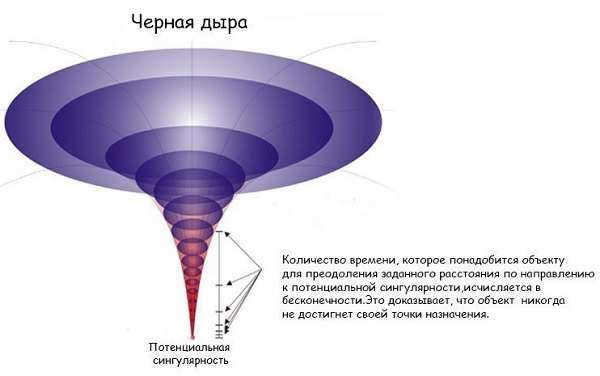
However, it is possible to fall beyond the event horizon where there is no matter. It is even theorized by many science fiction writers that a person could fall into it, although the experience would not be pleasant due to the immense gravitational force. In reality, anything could occur.
The event horizon, where time and space are warped, could offer multiple potential futures for the traveler. It is possible that beyond the point of no return, a new world or parallel universe awaits discovery.
Black holes lead to the unknown depths of space, and if one believes in the balance of the universe, it could eventually result in the formation of a new star. The death of a planet may be the result of a black hole, but it could also mark the birth of a new galaxy.
The biggest black hole in the Universe
In the latter half of the 18th century, a massive black hole was identified by a British astronomer, situated 94 million parsecs away from our planet Earth. This extraordinary phenomenon can be found at the core of the NGC 4889 galaxy.
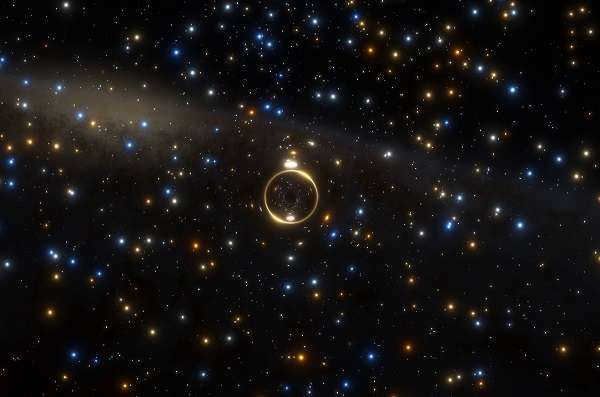

The cosmic object’s name is derived from the initials of the Northern Gemini and Cec observatories.
The mass of the black hole that shaped the galaxy exceeds 21 billion times that of the Sun. The largest event horizon ever recorded measures 67.5 billion kilometers in diameter, which is 15 times the distance from Neptune to the Sun.
It is challenging to determine the level of danger posed by cosmic anomalies. Astronomers rely solely on the surrounding space to establish the size and location of these objects. As a result, any potential collision would have no impact on the people living on planet Earth.
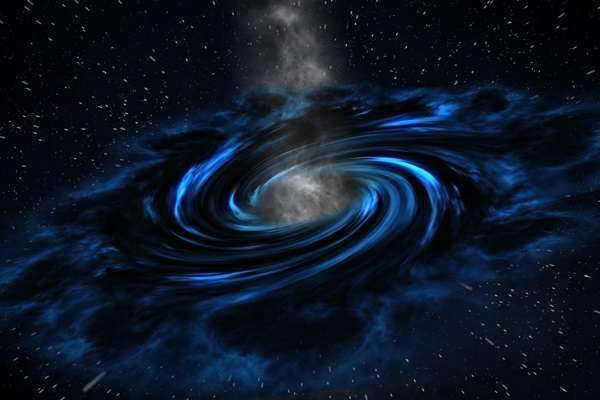
One of the black holes closest to us is known as “Monocerotes” (V616) or Mon. It is located about 3,000 light years away from our system, making it a safe distance. Monocerotes has a mass that is 9-13 times greater than the Sun.
The next closest black hole, called “Cygnus X-1,” is approximately 6,000 light years away. It has a mass that is about fifteen times greater than the Sun.
Curious information about black holes in outer space
The field of theoretical physics postulates that black holes emit a limited amount of photon particles, which ultimately leads to a reduction in their mass and eventual disappearance.
